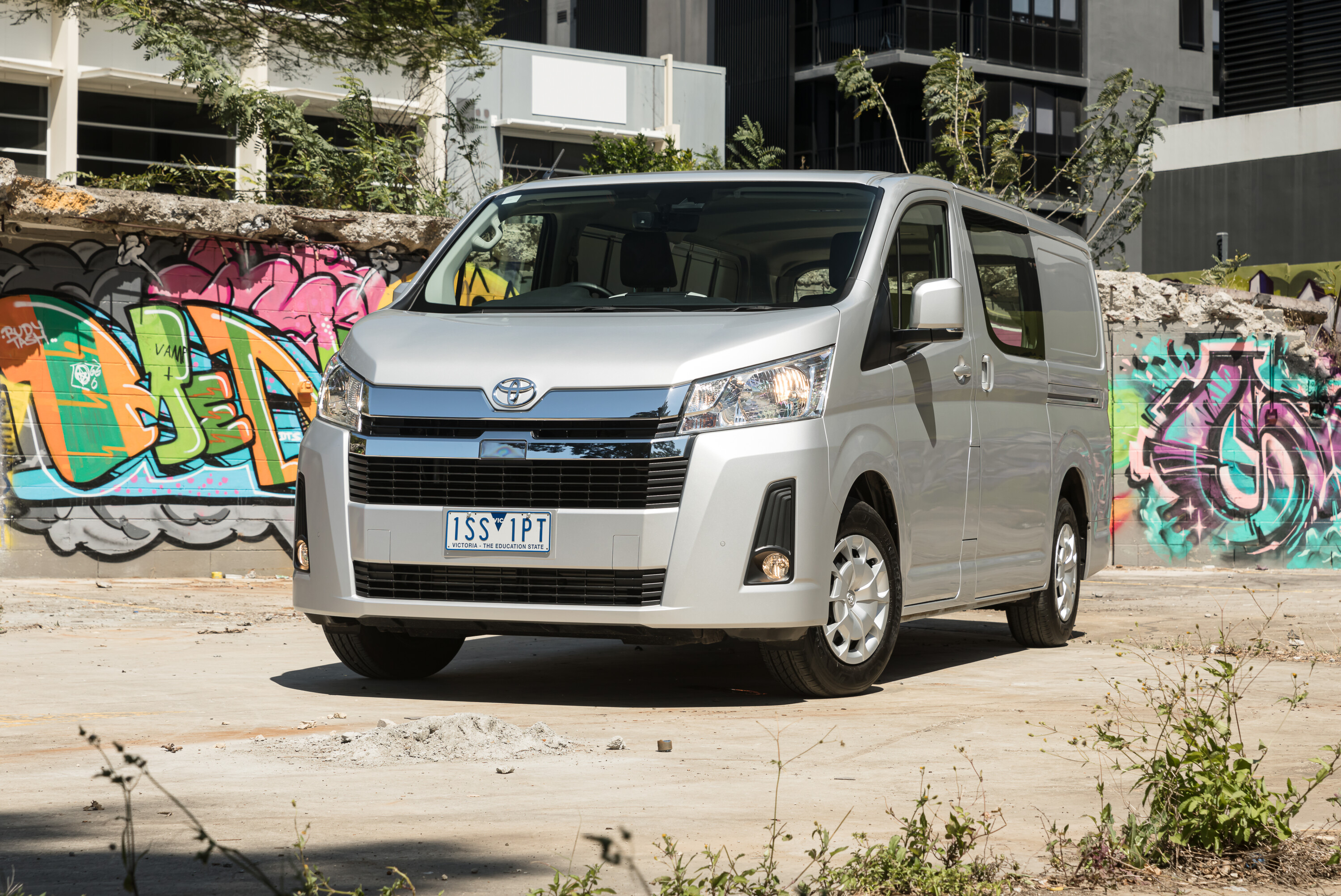
Things we like
- Decent cargo capacity
- Punchy 2.8-litre turbo-diesel shared with HiLux
- Rear-wheel drive, a rarity in the mid-sized van segment
Not so much
- Reversing camera distorts at edges
- Cup holders suitable for 1.5-litre bottles, less than ideal for coffee or cans
The Toyota HiAce has long been Australia’s preferred commercial van, renowned for its reliability.
For over fifty years, it has been the go-to vehicle for couriers, electricians, movers, and even those hauling around larger groups.
A glance outside the next time you get a delivery and you’ll likely be looking at a well-worn HiAce in your driveway. Much like its rugged sibling, the virtually indestructible HiLux, it’s seen as a safe investment.
With the launch of its sixth generation in 2019—the first major update in 15 years—the HiAce introduced a sleeker, semi-bonneted design that marked a significant departure from its traditional boxy silhouette.
So let’s take a look at what the class-leading HiAce offers in Australia.

Pricing and features
The HiAce lineup starts at $48,886, excluding on-road expenses, for a liftback version equipped with a manual gearbox. Add an extra $2000, for the automatic transmission. The rest of the range doesn’t have a manual option.
Opting for a barn door, the latest addition to the HiAce range, and you’ll pay an extra $750 if you’ve already decided on picking up the auto.
If it’s a people mover you’re after, the HiAce Commuter range consists of two variants, both which host 12 seats.
The commercial range on the other hand is available as a LWB Van (long wheel base), LWB Crew Van (5 seats) or SLWB Van (2 seats).
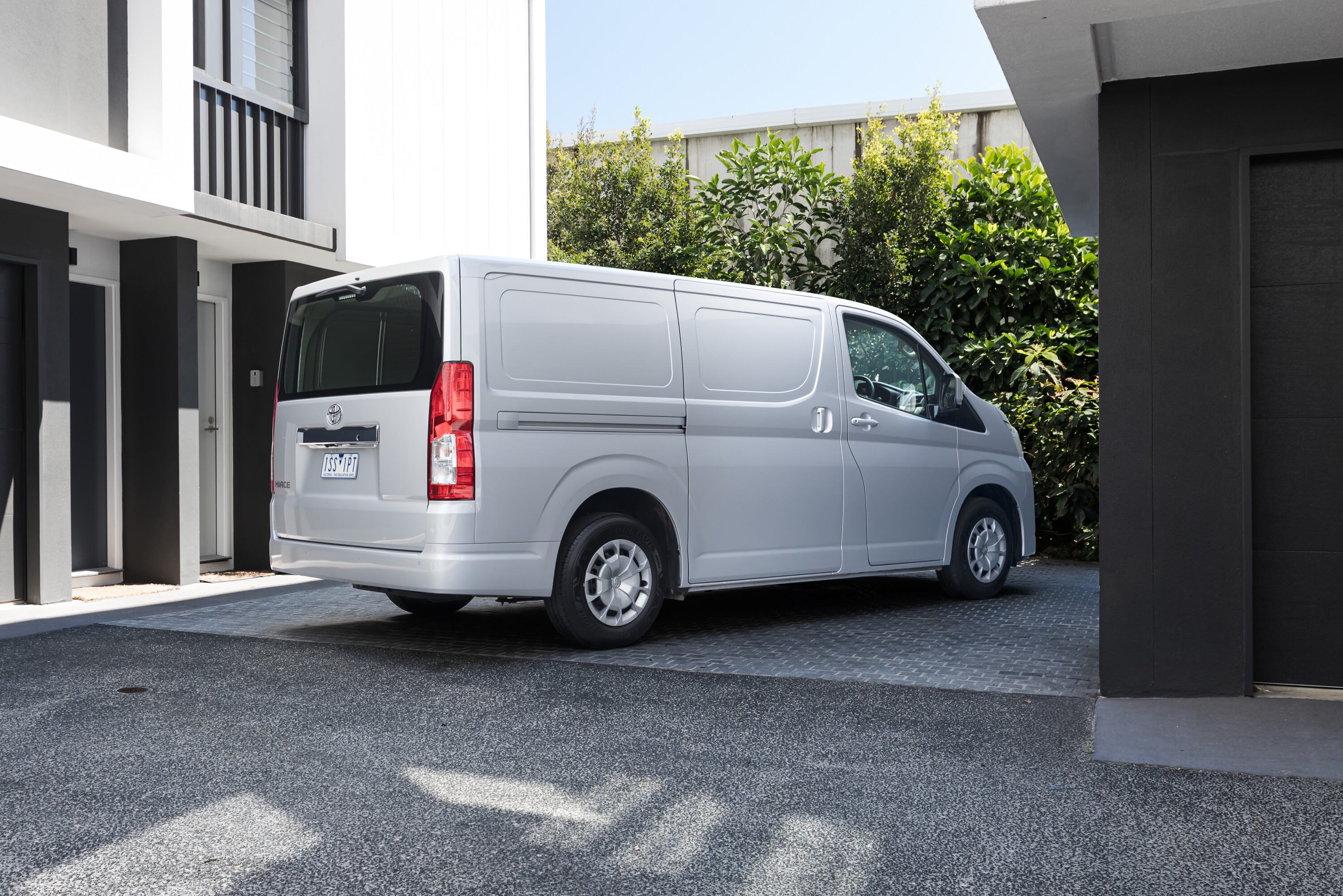
The LWB Van offers the following standard features: 16-inch steel wheels with full size spares, an 8-inch colour touchscreen, six speakers, reversing camera with front and rear parking sensors and satellite navigation.
The only colour available is french vanilla, a.k.a. white.
The LWB model has dimensions of 5265mm in length, 1950mm in width, and 1990mm in height, with a wheelbase measuring 3120mm.
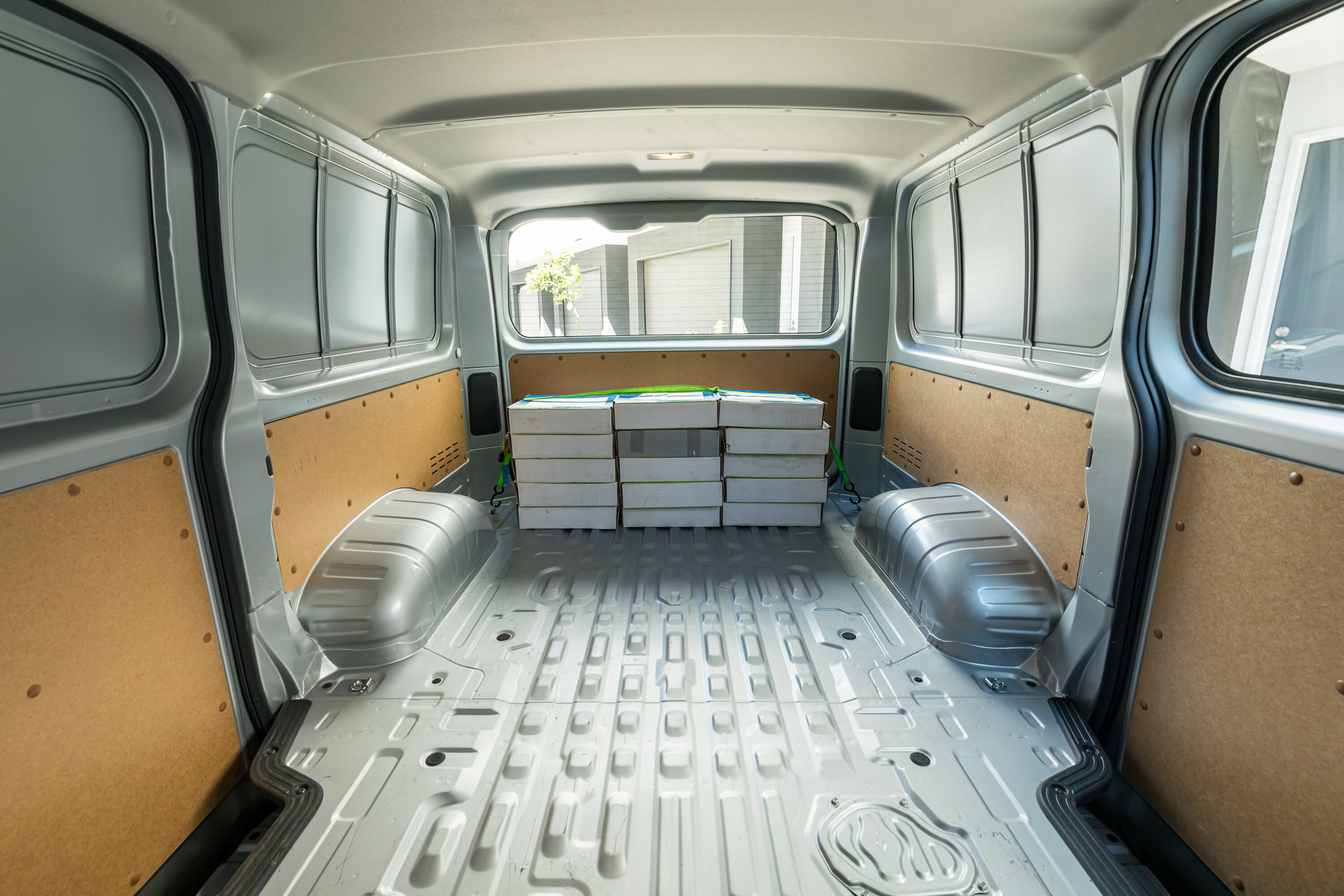
Its cargo bay is 2530mm long, 1760mm wide (with 1268mm between the wheel arches), and 1340mm tall. The LWB Van boasts a total cargo space of 6.2 cubic meters in contrast to the 9.3 cubic meters available in the Super Long Wheel Base (SLWB) model.
While the HiAce’s metal floors, wooden wall linings, and the absence of a cargo divider might lend it a somewhat basic appearance, it’s important to note that owners typically like the opportunity to customise the van to their specific needs.
Safety
The Toyota HiAce was stamped with a five-star ANCAP safety rating in 2019.
In crash safety evaluations, the HiAce received an impressive 94 percent in adult occupant protection and 88 percent in child occupant protection.
The HiAce LWB comes packed with standard safety features via the Toyota Safety Sense suite of features including pre-collision safety system, lane departure alert, auto high beam and road sign Assist.
You’ll also get important additions for a vehicle of this size such as a reversing camera with front and rear parking sensors, blind spot monitors and rear cross traffic alert.
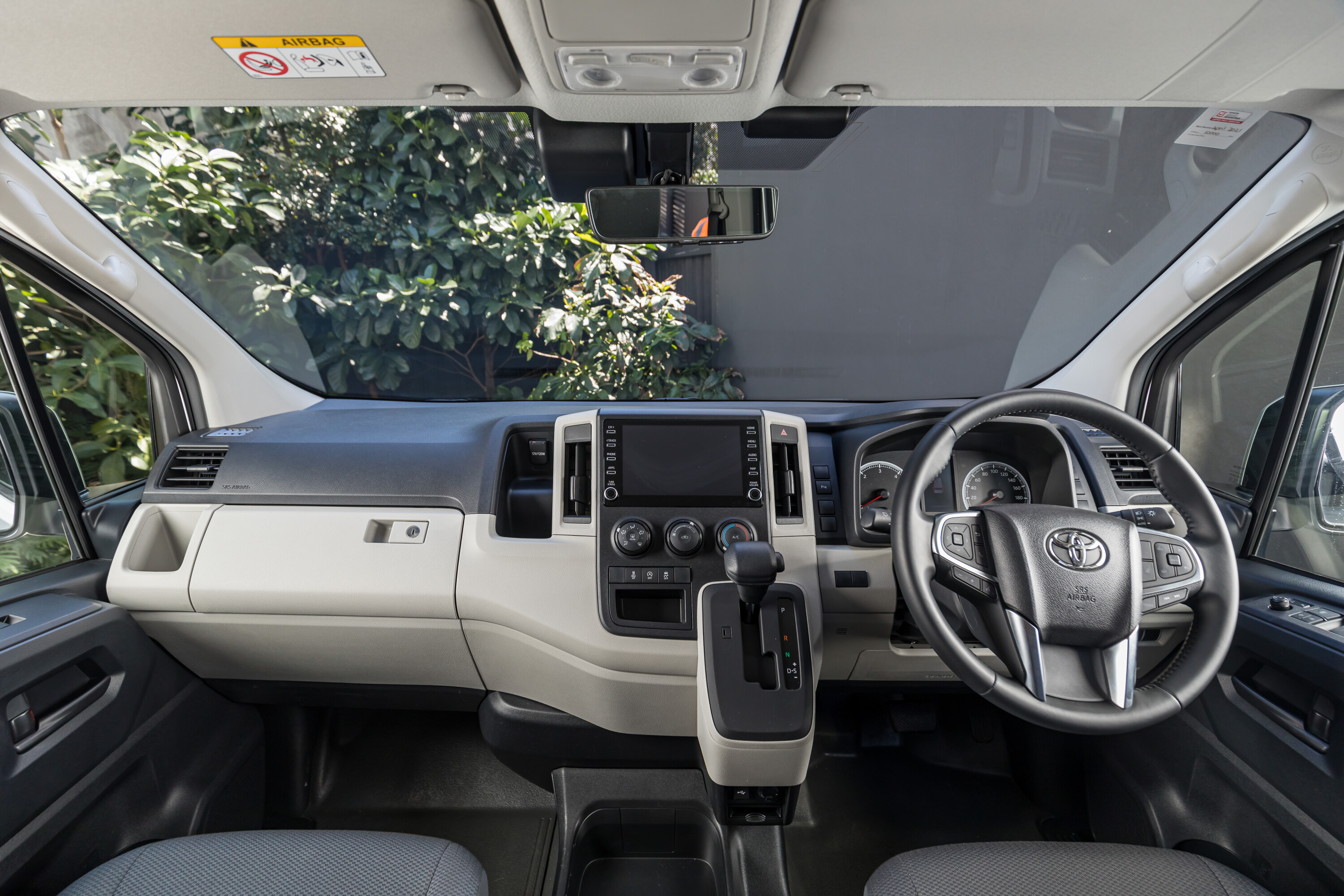
Your new HiAce will come with a year complimentary access to Toyota Connected Services which includes SOS Emergency Call, Automatic Collision Notification and Stolen Vehicle Tracking.
Key rivals
In the commercial van landscape, there isn’t a more notable vehicle than the HiAce. A segment leader, it has continued to be the dependable workhorse that so many Aussie businesses need.
Others competing for market share are:
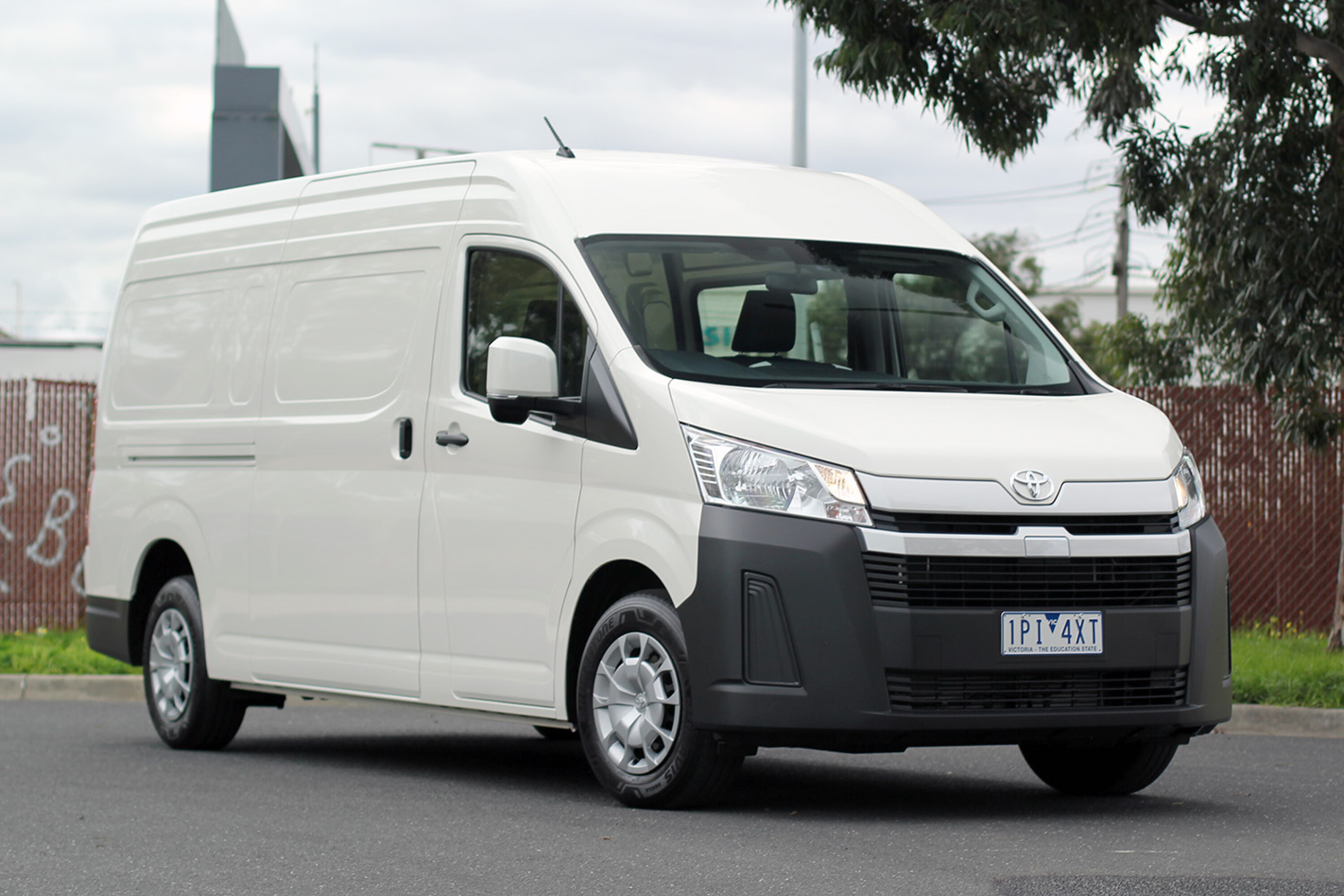
Should I put it on my shortlist?
The 2024 Toyota HiAce is one of those winning combinations that has won over so much commercial businesses over the years, and the recent addition of the barn door option has opened up the opportunity even further.
The LWB Van, although the technical entry-level of the range offers plenty of specification while still keeping the rear bare for customisation.
Things we like
- Decent cargo capacity
- Punchy 2.8-litre turbo-diesel shared with HiLux
- Rear-wheel drive, a rarity in the mid-sized van segment
Not so much
- Reversing camera distorts at edges
- Cup holders suitable for 1.5-litre bottles, less than ideal for coffee or cans




